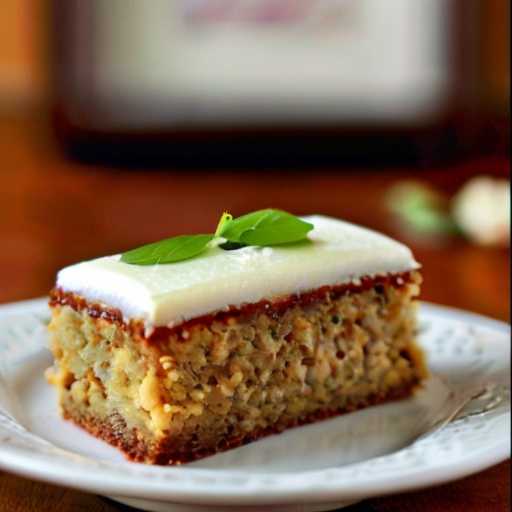Homemade Traditional Plum Cake Recipe
Traditional plum cake recipes originate from centuries-old traditions, are passed down through generations, and embody the essence of a homemade delicacy. Carefully crafted using timeless techniques, this precious delicacy celebrates the richness of seasonal fruit and warm spices. Experience the comforting flavors of nostalgia and tradition with every bite of this timeless dessert.
Homemade Traditional Plum Cake Recipe
Cuisine
Western
Difficulty
Medium
Preparation
30 minutes
Cooking
1 hour 30 minutes
Ingredients for homemade traditional plum cake:
- • 1 cup all-purpose flour
- • 1 teaspoon baking powder
- • 1/2 teaspoon baking powder
- • 1/4 teaspoon salt
- • 1/2 cup unsalted butter, softened
- • 1/2 cup granulated sugar
- •2 large eggs
- •1/4 cup milk
- •1 teaspoon vanilla extract
- •1/2 teaspoon ground cinnamon
- •1/4 teaspoon ground nutmeg
- •1/4 teaspoon ground cloves
- • 1 cup chopped dried prunes (prunes). )
- • 1/2 cup chopped nuts (such as walnuts or almonds)
- • 1/4 cup brandy or rum (optional)
- Optional Substitutes:
- • For dried prunes (prunes): You can substitute fruit. Instead of raisins, currants and dates.
- • For nuts: If you have allergies or preferences, you can also omit nuts completely or replace them with seeds such as pumpkin or sunflower seeds.
- • For brandy or rum: If you don’t want to use alcohol, you can substitute orange juice or apple juice for a similar flavor profile.
Cooking Instructions:
- Preparations:
- 1. Preheat oven to 350°F (175°C). A 9-inch round cake pan should be lined with parchment paper or greased and floured.
- 2. In a medium bowl, combine all-purpose flour, baking powder, baking soda, and salt. Set aside.
- 3. In a large mixing bowl, use an electric mixer or whisk to cream the softened butter and sugar until light and fluffy.
- 4. Beat thoroughly after each addition of egg. Add eggs one at a time. Add vanilla extract and stir.
- 5. Gradually add the dry flour mixture to the wet ingredients, alternating with the milk, until everything is well mixed. Be careful not to overmix.
- 6. Gently fold the chopped plums into the batter until evenly distributed. If you’d like, you can also add almond slices.
- 7. Pour the batter into the prepared cake pan and spread it evenly with a spatula.
- 8. Bake in the preheated oven for 45 to 50 minutes, or until a toothpick inserted in the center comes out clean.
- 9. Once baked, remove from the oven and let cool in the mold for about 10 minutes.
- 10. After 10 minutes, carefully transfer the cake to a wire rack to cool completely.
- 11. Once cool, sprinkle the top of the cake with powdered sugar, if desired.
- 12. Slice your homemade traditional plum cake and enjoy as a delicious dessert or with tea or coffee.
- Critical Points:
- • Remove the seeds and chop the plums before adding them to the dough.
- • Avoid overmixing the batter to avoid a tough cake texture.
- • Check the cake for doneness with a toothpick to ensure it is completely baked before removing it from the oven.
Kitchen tools or equipment: homemade traditional plum cake recipe:
- 1. Mixing bowls (various sizes)
- 2. Measuring cups and spoons
- 3. Electric mixer or hand mixer
- 4 . Wooden spoon or spatula
- 5. Cake or baking pan
- 6. Parchment paper or baking spray (to grease the pan)
- 7. Oven
- 8. Cooling rack
- 9. Knife or cherry pitter (for preparing plums)
- 10. Cutting board
- 11. Sieve or flour sifter
- 12. Grater (for zest if using citrus)
- 13. Aluminum foil (optional, for baking) )
- 14. Toothpick or cake tester (to check doneness)
- 15. Optional: Food processor (for quick mixing, if you have one)
- 16. Optional: Pastry brush (for applying syrup or icing the cake)
- 17. Optional: Decorative cake stand or plate (for serving)
Tips for perfecting the taste of homemade traditional plum cake Recipe:
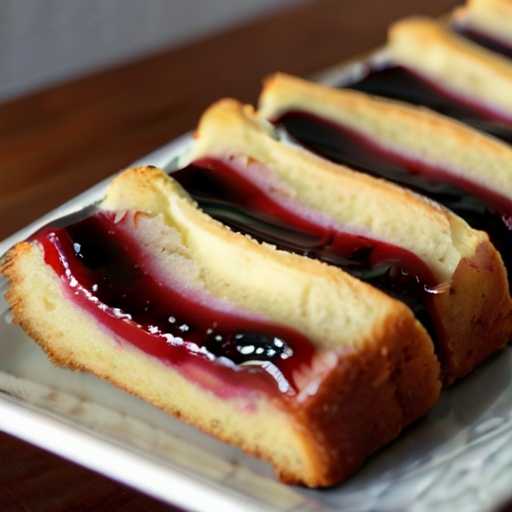
- 1. Choose the right plum: Ripe and juicy, slightly soft to the touch. Choose plums. The type of plums you choose will have a big impact on the flavor of your cake. Traditional varieties such as Santa Rosa and Damson are suitable.
- 2. Refine with spices: Traditional plum cakes often include warming spices such as cinnamon, nutmeg, and cloves. Add a pinch of these spices to the batter to enhance the flavor and add depth to the cake.
- 3. Soak the fruit: To give the cake a rich flavor, plums should be soaked overnight in a rum or brandy mixture. This not only gives it a juicy taste, but also releases the juices from the plums and keeps the cake moist.
- 4. Use quality ingredients: When baking a traditional plum cake, the quality of the ingredients is important. For the best taste, use high-quality flour, fresh eggs, real butter, and organic sugar.
- 5. Balance of sweetness and acidity: Plums have varying levels of sweetness. Therefore, taste the plums before baking and adjust the amount of sugar accordingly. The key to a delicious plum cake is the balance between sweetness and sourness.
- 6. Add citrus zest: Add citrus zest, such as orange or lemon, to enhance the fruity flavor of the cake. Bright, spicy notes beautifully complement the sweetness of the plums.
- 7. Layer flavors: Consider layering flavors by adding a thin spread of almond paste or apricot jam between the cake batter and plum slices. This adds complexity and richness to each bite.
- 8. Do not overmix. When mixing the dough, mix until just combined. Over-mixing can result in a dense, tough cake. Carefully mix the ingredients together, aiming for a light and soft crumb.
- 9. Adjust baking time: Watch the cake as it bakes and adjust the baking time if necessary. A perfectly baked plum cake should be golden brown on the top and a toothpick inserted into the center should come out clean.
- 10. Let it rest: Let the cake cool in the pan for at least 10 to 15 minutes, then place on a wire rack to cool completely. This allows the flavors to mix together and gives it a firm texture.
Suggestions for Traditional Plum Cake Recipe:

- 1. Coating Presentation:
- • Start by cutting the traditional plum cake into neat, even pieces. The slices highlight the beautiful arrangement of plums and the moist texture of the cake.
- • Arrange slices on a clean, elegant platter or individual dessert plates.
- 2. Garnish:
- • Lightly dust the slices with powdered sugar to add a touch of sweetness to the dish and make it visually appealing.
- • For a more rustic presentation, top each slice with fresh plums or mint sprigs. This will add color and freshness to the plate.
- 3. Side Dish:
- • Serve traditional plum cake with a dollop of heavy cream or a scoop of vanilla ice cream. The creamy texture brings out the rich, fruity flavor of the cake.
- • Or serve lightly with a drizzle of warm vanilla sauce or a side of tangy Greek yogurt.
- 4. Drink Pairings:
- • Pair this delicious dessert with freshly brewed coffee or aromatic black tea for a balance of sweetness and bitterness.
- • For a more festive feel, serve with a glass of mulled wine or a sweet dessert wine such as Spätlese Riesling.
- 5. Decorative Accents:
- • Enhance the presentation by garnishing the serving platter with sprigs of seasonal berries, edible flowers, or a sprinkle of cinnamon for a warm, inviting aroma.
Homemade Traditional Plum Cake Storage and Leftovers Recipe:
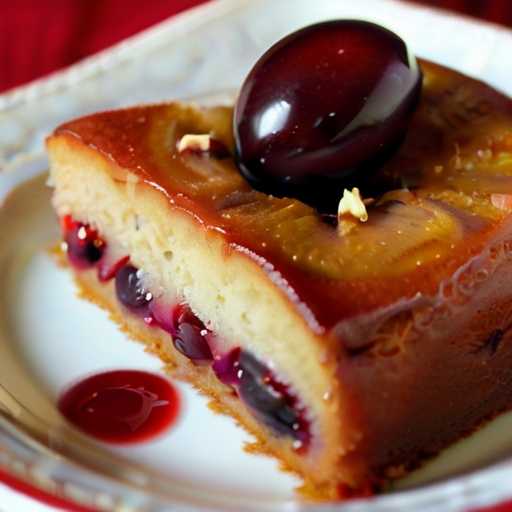
- Storage:
- 1. Cooling: Allow the plum cake to cool completely at room temperature before storing. This will prevent condensation from forming which will make the cake soggy.
- 2. Wrap: Once the plum cake has cooled, wrap it tightly in plastic wrap or aluminum foil. Please pack it securely to avoid exposure to air.
- 3. Refrigerate: For short-term storage, store the packaged plum cake in the refrigerator in an airtight container or sealable plastic bag. Proper refrigeration can extend the shelf life of your cake.
- 4. Freezing (optional): If you want to store plum cake for a long time, you can freeze it. Wrap the cake in several layers of plastic wrap and then a layer of aluminum foil on top to prevent freezer burn. Place in a freezer safe container or freezer bag.
- Reheat (if applicable):
- 1. Thawing: If you have frozen the plum cake, thaw it in the refrigerator overnight before reheating. This gradual thawing process retains moisture and prevents the cake from becoming too dry.
- 2. Room temperature: If the plum cake has been stored in the refrigerator, bring it to room temperature before reheating. This step ensures even heating and prevents the cake from cooling prematurely.
- 3. Oven method: Preheat oven to 300°F (150°C). Cut the wrapper from the plum cake and place it on a baking sheet. Cover the cake loosely with aluminum foil to prevent it from browning too much. Heat in the oven until warmed through, about 10-15 minutes.
- 4. How to use the microwave: Use the microwave to quickly reheat food. Remove the packaging and place the plum cake on a microwave-safe plate. Microwave on high in 20-30 second intervals until desired temperature is reached. The cake can go dry if it is overcooked, so take care not to do that.
- 5. To serve: Warm the plum cake, then let it cool for a few minutes before serving. Enjoy the pleasant flavor of traditional plum cake.
Approximate nutritional value per serving:
- • Calories: 250 kcal
- • Fat: 10 g
- • Saturated fat: 5 g
- • Trans fat: 0 g
- • Cholesterol: 40 mg
- • Sodium: 150 mg
- • Total carbohydrates: 38 g
- • Nutritional fiber: 2 g
- • Sugar: 25 g
- • Protein: 4 g
Please note that these values are approximate and may vary depending on the specific ingredients and quantities used in the recipe.
Health Benefits of Traditional Plum Cake Recipe

- Rich in antioxidants: Traditional plum cake is packed with plums, which are rich in antioxidants such as vitamin C and phytonutrients. These compounds help fight oxidative stress, reduce inflammation, and promote overall health.
- A good source of fiber: The combination of fruit, nuts, and whole grains in your cake will provide a high amount of fiber. Fiber aids digestion, promotes gut health, and helps regulate blood sugar levels, making it helpful for those suffering from diabetes or seeking weight management.
- Nutritious Ingredients: Ingredients like almonds, walnuts, and dried fruit not only improve taste but also add important nutrients to your cake, including healthy fats, protein, vitamins, and minerals. These nutrients support heart health, cognitive function, and immune system function.
- Less added sugar: When made at home, traditional plum cake can be customized to contain less added sugar than commercially processed cakes. Adequate sugar intake is essential for weight management, reducing the risk of chronic disease, and maintaining overall health.
- Sustained Energy Supply: The combination of complex carbohydrates from whole grains and natural sugars from fruits ensures a consistent release of energy, helping you feel full and satisfied for a long time. This will prevent you from having low energy and craving unhealthy snacks.
Variations to try on the traditional plum cake recipe:
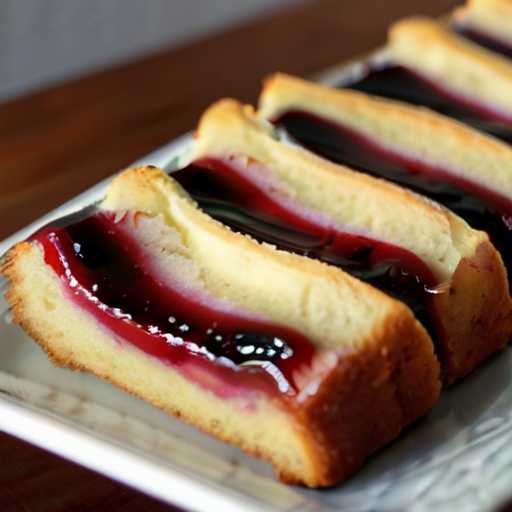
- Spiced Plum Cake:
- Add a warm spice mixture such as cinnamon, nutmeg, and cloves to the batter to add a comforting touch to the traditional plum cake recipe.
- Almond and Plum Cake:
- Add almond flour or finely ground almonds to the batter to create a nutty flavor that complements the sweetness of the plums.
- Orange Flavored Plum Cake:
- Freshly grated orange zest or orange juice is added to the batter to enhance the flavor and give the cake a refreshing citrus aroma.
- Gingerbread Plum Cake:
- Molasses, ginger, and a touch of allspice add gingerbread warmth to the dough, creating a delicious fusion of flavors.
- Vanilla Bean Plum Cake:
- We’ve improved the classic recipe by adding real vanilla bean seeds and high-quality vanilla extract to give the cake a rich, aromatic taste.
- Rum Soaked Plum Cake:
- Soak the plums in rum before adding them to the batter. This gives the cake a subtly juicy flavor and increases moisture.
- Cardamom Plum Cake:
- Add flavor and a slightly exotic touch to a traditional plum cake recipe by adding ground cardamom to the batter.
- Plum Cake with Lemon Glaze:
- Drizzle the cooled cake with a tangy lemon glaze to create a tangy contrast to the sweetness of the plums, adding flavor to every bite.
- Honey Roasted Plum Cake:
- Before adding the plums to the batter, they are roasted with a little honey to intensify the sweetness and create a caramel-like flavour.
- Pistachio and Plum Cake:
- Chopped pistachios mixed into the batter create an extra crunch and a subtle nutty flavor that pairs perfectly with the juicy plums.
What makes this traditional plum cake recipe stand out?

- 1. Authenticity: This recipe stays true to the roots of traditional plum cake making, respecting centuries-old techniques and ingredients. Every element reflects the authenticity of the original recipe, from the careful selection of ripe plums to the precise balance of spices.
- 2. Flavor complexity: Unlike its modern counterpart, this traditional plum cake has an unparalleled depth of flavor. The combination of juicy plums, warm spices like cinnamon and nutmeg, and hints of citrus creates a symphony of flavors that dance in your mouth with every sip.
- 3. Proven Technique: Making this plum cake is a labor of love that requires patience and skill, more than just following a recipe. From soaking the fruit in rum to letting the dough rise overnight, every step is critical to achieving the perfect texture and flavor.
- 4. Versatility: This recipe stays true to tradition, but also leaves room for customization and experimentation. The customization options are endless: add a handful of chopped nuts for an extra crunch, or drizzle your finished cake with a homemade glaze.
- 5. Heartfelt Satisfaction: Apart from being delicious, this traditional plum cake exudes an irreplaceable sense of nostalgia and security. Whether enjoyed with a steaming cup of tea on a chilly afternoon or shared with loved ones at a holiday gathering, each piece is filled with memories of joy and togetherness.
Traditional Plum Cake Recipe (Vegan and Gluten-Free Options)
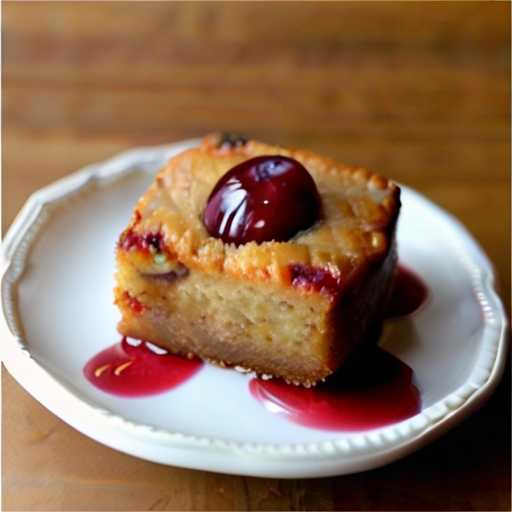
- Ingredients:
- • 2 cups gluten-free all-purpose flour (for gluten-free option) or regular all-purpose flour
- • 1 cup almond flour
- • 1 cup coconut sugar
- • 1 teaspoon baking powder
- • 1/2 teaspoon baking powder
- • 1/2 teaspoon salt
- • 1 teaspoon ground cinnamon
- • 1/2 teaspoon ground nutmeg
- • 1/4 teaspoon ground cloves
- • 1 cup unsweetened applesauce
- • 1/2 cup almond milk (or other vegetable milk)
- • 1/3 cup melted coconut oil
- • 1 tablespoon apple cider vinegar
- • 1 teaspoon vanilla extract
- • 1 chopped prunes 1 1 /2 cup (stoned and diced)
- • 1/2 cup chopped nuts (optional)
- Instructions:
- 1. Preheat oven to 350°F (175°C). Grease and flour a 9-inch round cake pan or line with parchment paper.
- 2. In a large mixing bowl, combine gluten-free flour (or regular flour if you are not on a gluten-free diet), almond flour, coconut sugar, baking powder, baking soda, salt, cinnamon, nutmeg, and gluten-free flour. Suit you. Mix the cloves well.
- 3. In a separate bowl, whisk applesauce, almond milk, melted coconut oil, apple cider vinegar, and vanilla extract until smooth.
- 4. Gradually pour the wet ingredients into the dry ingredients and stir until just combined. Be careful not to overmix.
- 5. Carefully mix in the chopped plums and nuts (if using) and distribute evenly throughout the dough.
- 6. Transfer the mixture into the ready-made cake pan and use a spatula to distribute it uniformly.
- 7. Bake in the preheated oven for 50 to 60 minutes, or until a toothpick inserted in the center comes out clean.
- 8. Remove the cake from the oven and let it cool in the tin for about 10 minutes, then transfer to a wire rack to cool completely.
- 9. Once cool, slice and serve the traditional plum cake. Enjoy it on its own or with vegan whipped cream or dairy-free ice cream for a special taste.
- 10. Leftovers can be stored in an airtight container at room temperature for up to 3 days or in the refrigerator for up to 1 week. enjoy!
Recipe Notes: Traditional Plum Cake
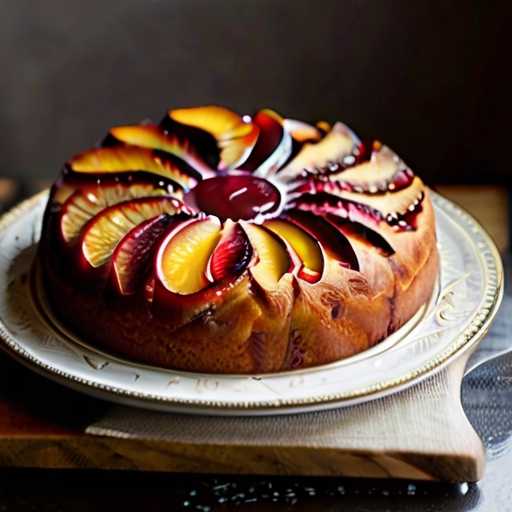
- 1. Historical Significance: Plum cake has a rich history spanning centuries, with variations found in European, Middle Eastern, and Indian cuisines. In England it was traditionally served at Christmas celebrations, while in Germany it was a staple during holidays, weddings and other special occasions.
- 2. Ingredient variations: This recipe uses prunes, but feel free to experiment with other fruits such as prunes, raisins, or figs. Each fruit gives the cake a unique flavor and sweetness.
- 3. Alcohol infusion: Many traditional plum cake recipes involve soaking dried fruit in alcohol, such as brandy or rum, to enhance flavor and moisture. You can also complete this step by soaking the fruit in water overnight before adding it to the cake batter.
- 4. Spice Blends: Combinations of warm spices such as cinnamon, nutmeg, and cloves add depth and complexity to the flavor of your cakes. Adjust the amount of spices to your liking to bring out the sweetness of the fruit.
- 5. Improve texture: To add a delicious crunch to your plum cake, consider adding chopped nuts like almonds, walnuts, or pecans to the batter. Pre-roasting the nuts will give them an extra nutty flavor.
- 6. Ripening to Enhance Flavor: Like many fruitcakes, traditional plum cake’s flavors meld over time and often improve with age. After baking, store the cake in an airtight container and let it rest for several days before serving to ensure optimal flavor.
- 7. Serve with side dishes: Traditional plum cake pairs wonderfully with a variety of side dishes, including whipped cream, vanilla sauce, and a dollop of clotted cream. These additives not only enhance the flavor of the cake, but also provide a fun contrast in texture.
- 8. Cultural Significance: In some cultures, plum cake is believed to bring good luck and prosperity, especially when enjoyed on festive occasions or shared with loved ones. Experience the spirit of tradition and celebration as you savor each piece of this homemade delicacy.
Frequently asked questions about “Homemade Traditional Plum Cake Recipe”:
- 1. Traditional What makes plum cake recipes unique?
- Traditional plum cake recipes typically involve rich, rich cakes filled with dried fruit, spices, and sometimes nuts. These cakes often contain ingredients such as candied orange zest, brandy, and a blend of warm spices such as cinnamon, nutmeg, and cloves to give them their unique flavor.
- 2. Can I use fresh plums instead of dried plums in a traditional plum cake recipe?
- Traditional plum cake recipes usually use dried fruit, but you can also use fresh plums if desired. You can also try plums. Be careful when baking raw plums, as they may release a lot of moisture. Therefore, you may need to adjust the recipe slightly to compensate for this. Consider reducing the amount of liquid in the dough or adding more flour to maintain the consistency of the cake.
- 3. How long in advance can I bake a traditional plum cake?
- Traditional plum cakes often taste better over time, so it’s common to make them days or weeks before serving. It’s a target. After baking, let it cool completely, wrap it tightly in plastic wrap or aluminum foil, and store it in an airtight container at room temperature. Some people like to “nourish” their cake by brushing it with brandy or rum every few days to enhance the flavor and keep it moist.
- 4. Are there variations of the traditional plum cake recipe to accommodate dietary restrictions?
- Yes, there are many variations of the traditional plum cake recipe to accommodate dietary restrictions. For example, you can find gluten-free recipes using alternative flours such as almond flour or gluten-free all-purpose flour. Similarly, those who avoid dairy can replace butter with non-dairy alternatives such as margarine or coconut oil. You can also use sugar substitutes as long as you watch your sugar intake.
- 5. Can you freeze traditional plum cake?
- Yes, you can freeze traditional plum cake to extend its shelf life. Once the cake has cooled completely, wrap it tightly in multiple layers of plastic wrap or aluminum foil to prevent freezer burn. Place the wrapped cake in a freezer-safe container or resealable plastic bag, removing as much air as possible before sealing. In the refrigerator, let it thaw overnight before eating.
In summary, this traditional plum cake recipe offers a delicious blend of rich flavor and comforting nostalgia. Ripe plums, warm spices and a juicy cake base combine to create a timeless treat perfect for any occasion. This recipe’s simplicity makes it accessible to baking beginners and experienced bakers alike, and its traditional roots evoke memories of cherished family gatherings and holidays. Experience the essence of tradition and taste the heartwarming deliciousness of this homemade classic plum cake recipe.





